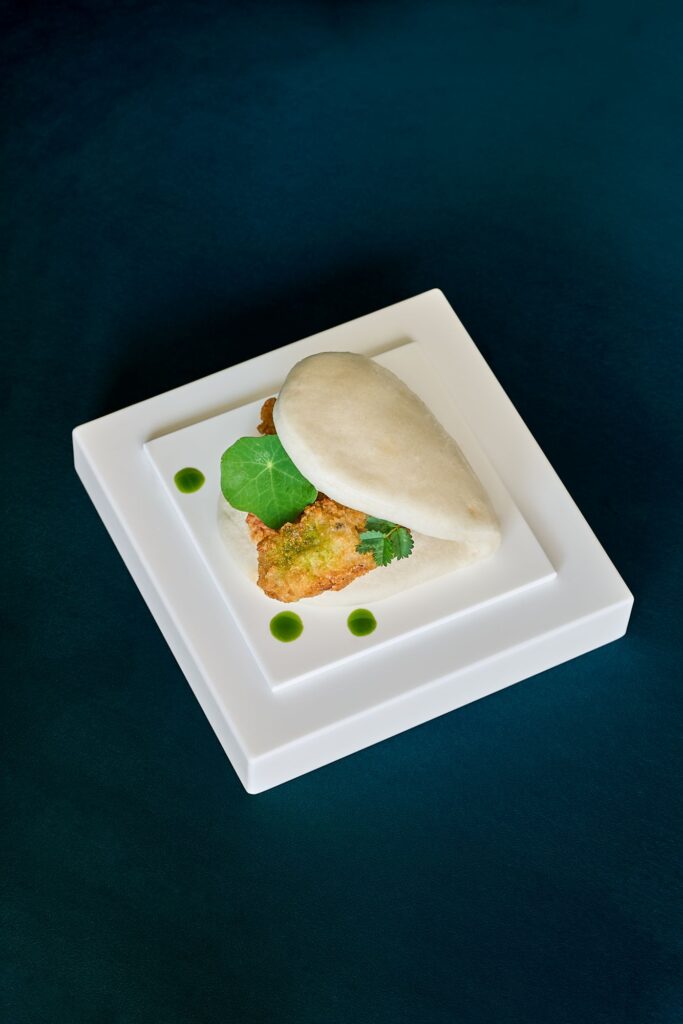October brought autumn to the northern hemisphere, so Prosecco DOC flew to the other side of the world, where spring was just beginning. Australia thus became the stage for a calendar packed with initiatives designed to promote and enhance the Denomination in one of the most strategic markets for its international growth.
Three major cities – Melbourne, Sydney and Brisbane – hosted exclusive events to introduce industry professionals, the media and consumers to the excellence and versatility of the world’s best-selling quality sparkling wine.
FROM MELBOURNE…
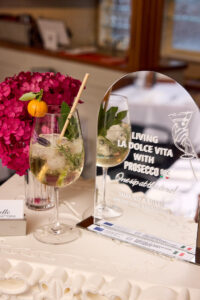
The Australian journey began in Melbourne, where the “Dolce Vita Italian Week by Prosecco DOC”, coordinated by the Italian Chamber of Commerce in Melbourne, took place from 20 September to 4 October 2025. The initiative transformed the city into a tribute to the Italian art of living, promoting the role of Prosecco DOC as a premium sparkling wine in mixology.
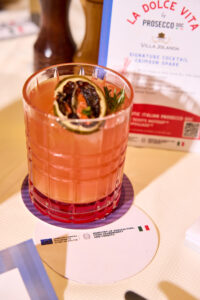
The project involved a number of venues synonymous with style and quality – including Funghi e Tartufo, DOC Osteria and Ms. Frankie Carlton – where guests could sample a selection of Prosecco DOC-based cocktails, including a signature drink inspired by “La Dolce Vita”.
The campaign was also publicised through Time Out Australia, which published a guide dedicated to the locations involved and launched campaigns with influencers, encouraging the public to discover and experience Prosecco DOC.
…IN BRISBANE…
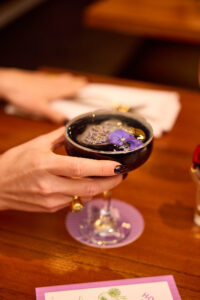
The activities, coordinated by Meiburg Wine Media, continued in Brisbane and Sydney with the involvement of Annette Lacey MW. The relaxed atmosphere allowed participants to discover the ideal food pairings with Prosecco DOC, on a journey to discover the history, territory, production methods and various types.
Also in Melbourne, Prosecco DOC was presented to both consumers and trade professionals at a Wine Dinner and Masterclass led by Mike Bennie, a wine journalist and leading figure in the Australian wine industry.
…TO SYDNEY

The last stop was Sydney, the setting for a major event at Chiswick Woolhara, dedicated to the trade press and lifestyle media, with guests from international publications such as Forbes Australia. “Prosecco DOC: an everlasting spring” was a true celebration of the arrival of spring, which is reflected in the typical aromas of Prosecco DOC.
The evening was hosted by wine expert Mike Ben nie and anchor woman Kate Freebairn, who accompanied guests on a journey of discovery of the appellation and the secrets of its success.
The companies that took part in these initiatives were La Delizia, La Gioiosa, Le Contesse, Le Rughe, Mionetto, Perlino, Salatin, Santero, Tenuta Sant’Anna, Val D’Oca and Villa Sandi.
There are places where craftsmanship meets beauty and creativity takes shape through ancient techniques and innovative visions. These are the workshops, shops and studios of Made in Italy which, thanks to Apritimoda, open their doors to the public every year to reveal the most authentic and secret side of Italian fashion. On 25 and 26 October 2025, over a hundred businesses scattered throughout the peninsula will offer free guided tours to reveal how iconic garments, precious fabrics and design objects that are the envy of the world are created. Prosecco DOC, which has been supporting Apritimoda for years, sharing its values of elegance, craftsmanship and culture, could not miss this initiative.
For this 9th edition, the Consortium will once again be the Official Sparkling Wine, offering a glass for the official toast and to accompany visitors’ experiences in some of the most evocative locations.
2025 Edition
The Apritimoda 2025 calendar will open on 13 October with a special evening in Piazza Giuseppe Tomasi di Lampedusa in Milan, during which the students of the Nuova Accademia delle Belle Arti (NABA) who took part in the contest promoted by the Consortium in collaboration with the academy, now in its fourth edition, will be awarded. This year, the young creatives have tried their hand at designing a pattern for a neck warmer inspired by the world of winter sports, ahead of the Milan Cortina 2026 Winter Olympic and Paralympic Games. This project brings together the artistic creativity of the students and the world of sport, demonstrating how the Consortium is able to naturally intertwine and enhance its two main promotional areas: sport and art.
The projects
Over the years, this synergy with NABA has given rise to numerous projects that have enriched the Consortium’s image with fresh and innovative ideas.
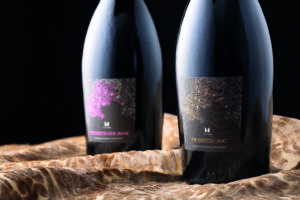
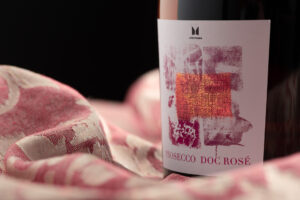
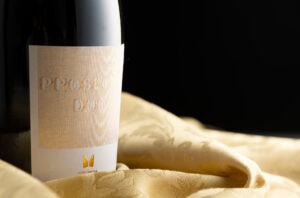
The contests have resulted in original graphic labels for Prosecco DOC bottles and, in the last two years, creations dedicated to the Milan Cortina 2026 Winter Olympic and Paralympic Games.
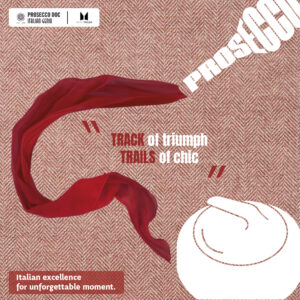
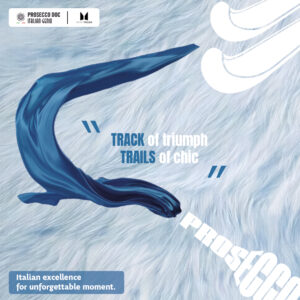
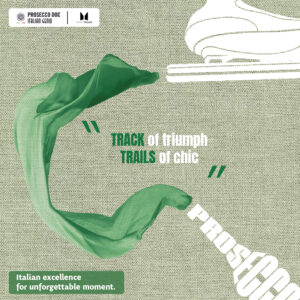
The result is a journey that celebrates Italian excellence in all its forms: the talent of young people, the craftsmanship of Made in Italy companies, the beauty of fashion and the taste of a glass of Prosecco DOC. Because behind every creative gesture, there is always a story of passion and culture.
Cortina d’Ampezzo, in the heart of the province of Belluno, is an integral part of the Prosecco Designation, and the Consortium has always proudly promoted initiatives taking place in the Pearl of the Dolomites, such as the Milan Cortina 2026 Winter Olympic and Paralympic Games, for which Prosecco DOC is the Official Sparkling Wine. At the end of the last summer before the long-awaited event, Prosecco DOC has chosen to support two initiatives that best combine gastronomic excellence and sport with the local area.
The Queen of Taste
 On 13rd September, Cortina will host the ninth edition of The Queen of Taste, the festival that celebrates mountain cuisine as an authentic excellence of the territory, promoting the encounter between the culinary tradition of Ampezzo and its most innovative reinterpretations in a fusion and contemporary key, which will once again receive the support of the Consortium this year.
On 13rd September, Cortina will host the ninth edition of The Queen of Taste, the festival that celebrates mountain cuisine as an authentic excellence of the territory, promoting the encounter between the culinary tradition of Ampezzo and its most innovative reinterpretations in a fusion and contemporary key, which will once again receive the support of the Consortium this year.
The day will begin with a breakfast at high altitude at the Col Druscié Refuge, created by Master Pastry Chef Massimo Alverà, a member of the Chef Team Cortina, together with Master Pastry Chefs Francesco Ballico and Marco Battaglia.
 Afterwards, Prosecco DOC will accompany guests to the aperitif prelude to the Cortina Chef Tour: a five-stage itinerant lunch among the enchanting landscapes of the Dolomites. The protagonists will be the chefs of the Chef Team Cortina – Luca Menardi, Federico Rovacchi, Nicola Bellodis, Carlo Festini Cucco, Graziano Prest, Luigi Dariz, Fabio Pompanin and Luigino Anzanello – accompanied by special guests.
Afterwards, Prosecco DOC will accompany guests to the aperitif prelude to the Cortina Chef Tour: a five-stage itinerant lunch among the enchanting landscapes of the Dolomites. The protagonists will be the chefs of the Chef Team Cortina – Luca Menardi, Federico Rovacchi, Nicola Bellodis, Carlo Festini Cucco, Graziano Prest, Luigi Dariz, Fabio Pompanin and Luigino Anzanello – accompanied by special guests.
Among them is Chef Enrico Bartolini, an icon of haute cuisine with 14 Michelin stars (first in Italy and second in the world), who will create the brand new “Piatto Cortina” for the occasion. A benchmark in Milanese cuisine with his three-star restaurant at MUDEC, Bartolini will use this new dish to tell the story of the two cities, united by creativity, excellence and, now, the Olympic spirit.
The grand finale is expected to take place at the prestigious Hotel Ancora, in the heart of Cortina.
The companies taking part in this initiative are: Brilla!, Cantine Maschio, Casa Vinicola Bosco Malera, Italian Wine Brands, La Marca, Le Rughe, Masottina, Ponte 1948, Serena Wines 1881 and Villa Sandi.
To take part, visit the website: https://thequeenoftaste.cortinaforus.it/eventi/
The Great Ride Milano – Cortina
 The Consortium is a partner of The Great Ride Milano-Cortina, a cycling adventure currently taking place, covering over 530 km with 4,500 metres of elevation gain. A unique, non-competitive experience open to all, between the cities that will host the 2026 Winter Olympic and Paralympic Games.
The Consortium is a partner of The Great Ride Milano-Cortina, a cycling adventure currently taking place, covering over 530 km with 4,500 metres of elevation gain. A unique, non-competitive experience open to all, between the cities that will host the 2026 Winter Olympic and Paralympic Games.
The route has been designed to allow participants – around 1,500 – to set off from Milan, Verona or Treviso and reach the final stage in Cortina.
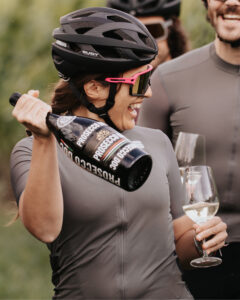 Along the route, cyclists have the opportunity to discover the Denomination’s territory and its food and wine excellences, with recommended stops at the Mionetto, Villa Sandi and Zonin wineries, ready to welcome sports enthusiasts with tastings, refreshments and overnight accommodation.
Along the route, cyclists have the opportunity to discover the Denomination’s territory and its food and wine excellences, with recommended stops at the Mionetto, Villa Sandi and Zonin wineries, ready to welcome sports enthusiasts with tastings, refreshments and overnight accommodation.
Special guests of Prosecco DOC are Pietro Francese, a cycling influencer, and three Benetton Rugby champions – Michele Lamaro, Manuel Tetaz Chaparro and Tiziano Pasquali – who will also be sharing their experiences on social media.
Prosecco DOC: ambassador of Italian territory and lifestyle
Through these events, the Prosecco DOC Consortium confirms its commitment to promoting the symbolic places of the Denomination and a model of genuine conviviality, emblematic of the Italian lifestyle. A journey that looks ahead to the Milan Cortina 2026 Winter Olympic and Paralympic Games, a unique opportunity to enhance the dialogue between territory and quality.
On 25 September 2025, the Prosecco DOC Consortium will travel to Mexico City for an exclusive event organised in collaboration with Gambero Rosso: “Prosecco DOC: A Sparkling Affair”. The day will be entirely dedicated to sparkling wines from Veneto and Friuli, with the aim of promoting the designation and fostering new business opportunities for consortium members.
The initiative is part of a process of strengthening relations between Prosecco DOC and Mexico, which began in 2017 with the collaboration with the Consejo Regulador del Tequila for the protection of appellations, and has been consolidated over time through Gambero Rosso’s promotional initiatives.
The programme
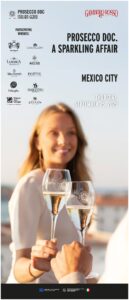 The event will be held at Esca Restaurant, a hidden gem in the Roma Norte neighbourhood, where Italian taste meets Mexican atmosphere. Chef Tobías Petzold will be at the helm, offering a contemporary, balanced and sophisticated gastronomic experience, with a particular focus on seafood specialities, capable of bringing together refined Italian sparkling wines and bold Mexican flavours.
The event will be held at Esca Restaurant, a hidden gem in the Roma Norte neighbourhood, where Italian taste meets Mexican atmosphere. Chef Tobías Petzold will be at the helm, offering a contemporary, balanced and sophisticated gastronomic experience, with a particular focus on seafood specialities, capable of bringing together refined Italian sparkling wines and bold Mexican flavours.
The day will be divided into three parts:
- A masterclass dedicated to the Prosecco designation, from production techniques to positioning on international markets, to its extraordinary versatility in pairings. The meeting will be led by Marco Sabellico, editor-in-chief of Gambero Rosso’s Vini d’Italia guide, and Tanja Barattin, head of the Consortium’s Promotion and Enhancement Area, accompanied by Chef Petzold, who will present finger food paired with Prosecco DOC labels.
- Business-to-business meetings to encourage dialogue between companies in the appellation and local buyers.
- The Afterwork Party dedicated to the media, influencers and bloggers: a celebration of modern Italian drinking culture in the name of style and spontaneity. Prosecco DOC tastings, food pairings and a mixology corner dedicated to cocktails, such as Spritz alla Messicana, all accompanied by DJ sets.
The protagonists of the event are the companies: Antonutti, Cantine Maschio, Casa Paladin, La Marca, Le Rughe, Mionetto, Sartori di Verona, Tenuta San Giorgio, Viticoltori Ponte and Zonin.
With “A Sparkling Affair”, the Consortium confirms its mission: to promote the appellation around the world, supporting the companies that represent it and showcasing Italian excellence through authentic experiences that combine tradition, conviviality and contemporary lifestyle.
As per tradition, at the end of August, Prosecco DOC bubbles arrive at the Lido to accompany some of the most significant moments organised during the Venice International Film Festival.
Rolling Stone celebrates cinema at the Lido di Venezia
 On 28 August, Prosecco DOC took part in the highly anticipated event organised by the editorial staff of the historic Rolling Stone magazine on the terrace of the Hotel Ausonia Hungaria, one of the most evocative locations on the Lido di Venezia. This event was held to celebrate the release of the magazine’s special issue, dedicated entirely to cinema and its protagonists.
On 28 August, Prosecco DOC took part in the highly anticipated event organised by the editorial staff of the historic Rolling Stone magazine on the terrace of the Hotel Ausonia Hungaria, one of the most evocative locations on the Lido di Venezia. This event was held to celebrate the release of the magazine’s special issue, dedicated entirely to cinema and its protagonists.
The evening featured a highly acclaimed talk with Valeria Golino and Valeria Bruni Tedeschi, two of the most beloved actresses and directors on the Italian and international film scene. The meeting was reserved for a select audience, composed of the press and personalities from the worlds of cinema, culture and branding. At the end of the talks, guests were treated to a refined aperitif with Prosecco DOC, cocktails and a DJ set.
The experience was also enriched by the “Il Divano di Rolling Stone” format: video interviews with the talents in competition and special guests, filmed on the sand of the Lido and aboard the Maxi Yacht Prosecco DOC Shockwave3 against the enchanting backdrop of the Venice lagoon.
Venice International Film Festival and Kineo Award
 The Rolling Stone event was part of a busy few days for the Consortium, which, as usual, was hosted in the Veneto Region’s space inside the iconic Hotel Excelsior, a crossroads for actors, directors and producers before the Red Carpet parade. Among the highlights were the presence of the Prosecco DOC Imoco Volley team and several meetings dedicated to the Milan Cortina 2026 Winter Olympics and Paralympics, with the presentation of the Olympic and Paralympic Torches and cultural projects related to the Games.
The Rolling Stone event was part of a busy few days for the Consortium, which, as usual, was hosted in the Veneto Region’s space inside the iconic Hotel Excelsior, a crossroads for actors, directors and producers before the Red Carpet parade. Among the highlights were the presence of the Prosecco DOC Imoco Volley team and several meetings dedicated to the Milan Cortina 2026 Winter Olympics and Paralympics, with the presentation of the Olympic and Paralympic Torches and cultural projects related to the Games.
Finally, Veneto-Friuli sparkling wines, as Official Sparkling Wine, were present for the fifth consecutive year at the Kineo Award gala evening, held on 30 August in the splendid setting of Ca’ Sagredo overlooking the Grand Canal.
The editorial project born from the collaboration between the Consorzio Prosecco DOC and the Vinibuoni d’Italia Guide brings us to Piedmont, to Serralunga d’Alba, where Michelangelo Mammoliti leads the visionary kitchen of La Rei Natura. With two Michelin stars, his cuisine tells a story of memory, nature, technique, and freedom.
Born into a family where food was always at the center, Mammoliti trained with some of the great masters of French gastronomy. Today, he carries forward a culinary project that speaks of sensations, seasons, and identity.
The Recipe:
Barbecued Spaghetti Cooked in Cuneo Prosciutto Crudo Extract
La Rei Natura – SERRALUNGA D’ALBA (CN)
Ingredients:
320 g Gragnano spaghetti – 100 g barbecue-infused butter – 800 g Cuneo Prosciutto Crudo extract – rosemary flowers – salt – Sarawak pepper – vegetable charcoal powder
This dish fuses the ancestral element of fire with the refinement of extraction. The spaghetti, briefly blanched, is finished risotto-style in a rich essence of Cuneo Prosciutto Crudo, infused with barbecue aromas, and topped with Sarawak pepper, rosemary flowers, and vegetable charcoal.
A preparation that evokes the forest, smokiness, and the intensity of the raw ingredients. On the palate, sweet, savory, and smoky notes alternate in a precise and enveloping progression. Few elements, immense sensory impact.
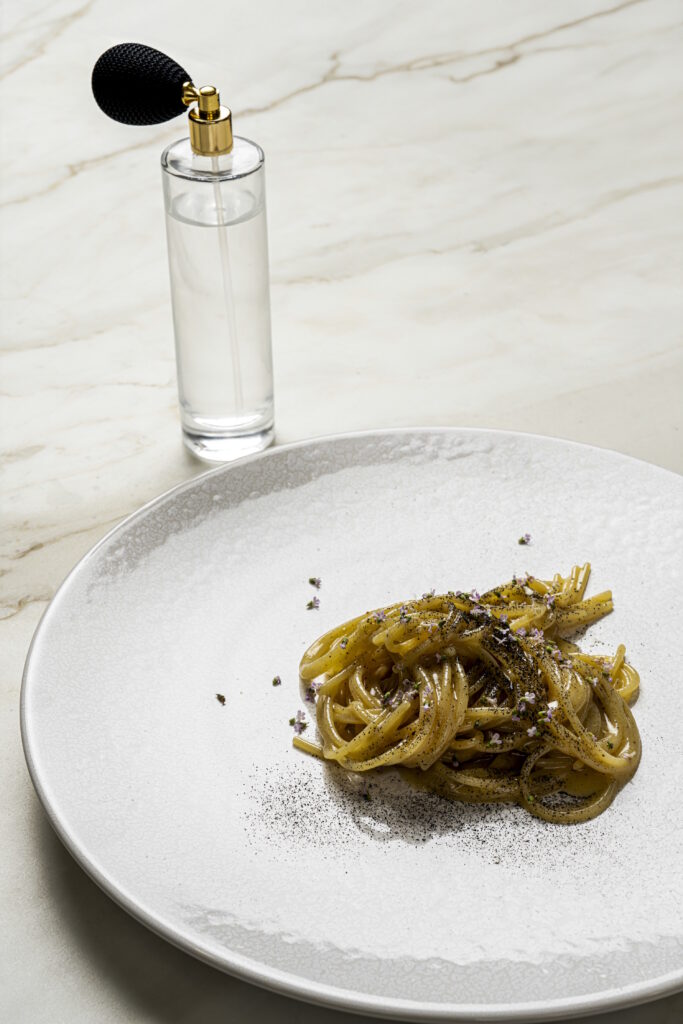
Preparation:
Blanch the spaghetti in salted water for 5 minutes, even though the pasta’s usual cooking time is longer. Continue cooking the spaghetti in a pan with the Cuneo Prosciutto Crudo extract for another 2 minutes. Add the barbecue-infused butter and finish with Sarawak pepper. Plate and garnish with rosemary flowers and a dusting of vegetable charcoal.
Pairing: Prosecco DOC Brut Nature
To support and accompany such sensory intensity, Alessandro Scorsone recommends Prosecco DOC Brut Nature. Dry, essential, and highly vertical, this wine both cleanses and refreshes the palate. Its structure and freshness complement the smoky notes with discretion and elegance.
A pairing that proves even the most radical expressions of contemporary cuisine can find a reliable and sophisticated companion in Prosecco DOC.
La ricetta: Bao farciti con ostriche di Scardovari fritte, ragù di frattaglie di coniglio e olio al cipollotto verde
Il Vizio – SINA BERNINI BRISTOL ROMA
Per i bao: 400 g di farina tipo 0 – 240 ml di acqua – 10 g di lievito di birra fresco 1 cucchiaino di zucchero semolato
Per il ragù di frattaglie di coniglio: 1 carota – 1 costa di sedano – 1 cipolla_200 g di fegatini di coniglio – 100 g di cuori di coniglio – 2 foglie di alloro – 1 rametto di rosmarino 1 pizzico di peperoncino in polvere – 1/2 bicchiere di vino bianco -1 cucchiaio di triplo concentrato di pomodoro -olio extravergine di oliva – sale
Per le ostriche fritte: 8 ostriche di Scardovari – olio extravergine di oliva dal gusto leggero
Per la pastella: 2 tuorli d’uovo – 2 cucchiai di farina – 1/2 bicchiere di panna liquida 1 albume – sale fine e sale in scaglie – pepe
Per olio al cipollotto verde: foglie verdi del cipollotto – olio di vinacciolo
Un amuse-bouche audace e raffinato. I bao, morbidi panini cotti al vapore, vengono farciti con un ragù intenso di frattaglie di coniglio e ostriche fritte in pastella, il tutto rifinito con un tocco aromatico di olio al cipollotto verde.
Un’esplosione di consistenze e sapori: la cremosità del ragù, la croccantezza dell’ostrica, la sapidità marina e la componente erbacea. Un boccone sensuale e complesso, che richiede un vino capace di accompagnare e bilanciare senza appesantire.
Passaggi:
Per i bao sciogliere il lievito di birra nell’acqua, insieme allo zucchero. Aggiungere alla farina e impastare fino a ottenere un composto omogeneo ed elastico. Lasciare riposare l’impasto coperto per circa 2 ore. Quando l’impasto avrà raddoppiato il suo volume, stendere l’impasto a circa 2 cm, con un coppapasta da 8-10 cm ritagliare dei dischi. Allungare leggermente i dischi con il matterello formando degli ovali. Ripiegare ogni ovale su se stesso inserendo un foglietto di carta da forno, in modo da non far attaccare l’impasto. Trasferire nel cestello per cottura a vapore foderato con carta da forno, coprire e lasciare lievitare per circa 15 minuti. Cuocere a vapore per circa 20 minuti. Togliere il cestello dal vapore senza scoprirlo, lasciare riposare coperto per altri 10 minuti. Per il ragù di frattaglie di coniglio mondare e affettare le verdure, i fegatini e i cuori di coniglio. Versare un filo d’olio in un tegame, aggiungere le foglie di alloro, il rosmarino e il peperoncino, fare rosolare per un minuto. Aggiungere i fegatini e i cuori, lasciare rosolare per 2 minuti. Togliere le foglie di alloro e il rosmarino, sfumare con il vino bianco. Quando il vino sarà sfumato aggiungere il trito di sedano, carota e cipolla, e lasciare rosolare per qualche minuto. Bagnare con un paio di mestoli di acqua e aggiungere il triplo concentrato di pomodoro, lasciare cuocere a fiamma moderata per circa 40 minuti, regolare di sale. Per l’olio al cipollotto verde unire uguali quantità di parte verde del cipollotto e olio di vinacciolo, e riscaldare fino a 85 °C, omogenizzare con un frullatore a immersione. Lasciare riposare l’emulsione per circa un’ora. La parte che galleggia, formata principalmente da particelle di cipollotto, va tolta e utilizzata per altre preparazioni, la parte sottostante è l’olio aromatizzato al cipollotto verde. Per le ostriche fritte in una terrina sbattere i tuorli con la farina setacciata, unire sale, pepe e, poca alla volta, la panna mescolando sino a ottenere una pastella liscia, quindi incorporarvi l’albume montato a neve. Staccare le ostriche dalla loro conchiglia tenendole sopra un tegame in modo che sotto si raccolga l’acqua contenuta nel guscio. Aggiungere il liquido delle ostriche filtrato alla pastella e mescolare bene. Asciugare le ostriche e tuffarle nella pastella. In una padella a bordi alti scaldare abbondante olio e friggervi poche ostriche in pastella alla volta. Quando sono color oro pallido ritirarle, asciugarle su carta assorbente, condire con un poco di sale a scaglie. Per la finitura del piatto estrarre i bao dal cestello, farcirli con un poco di ragù di frattaglie di coniglio, due ostriche e terminare con qualche goccia di olio al cipollotto verde.
L’abbinamento: Prosecco DOC Extra Brut
Alessandro Scorsone sceglie un Prosecco DOC Extra Brut, ideale per abbinamenti verticali e strutturati. La sua acidità netta e il dosaggio minimo bilanciano la ricchezza del piatto e accompagnano con eleganza la complessità aromatica.
Un incontro che dimostra come il Prosecco DOC possa essere protagonista anche in contesti gastronomici audaci, alzando il livello e trovando equilibrio anche nei contrasti più marcati.
June proved to be a very busy month for the international promotion of Prosecco DOC. Two important initiatives strengthened the Appellation’s presence and prestige in the U.S. market: the National Prosecco Week – now in its eighth edition – and participation for the first time in the exclusive Food & Wine Classic in Aspen.
National Prosecco Week – 8th edition
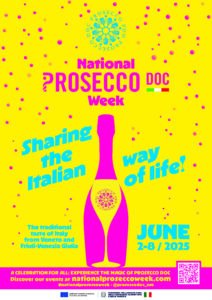
National Prosecco Week, held June 2-8 (with extended activations in the following weeks as well), crisscrossed the United States with a series of events, tastings, promotions and collaborations involving more than 2,000 outlets including wine shops, e-commerce and restaurants.
Three initiatives stood out in the week’s program
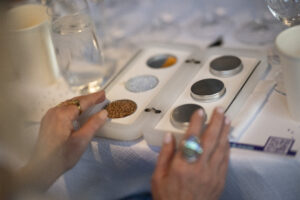 Tasting in the Dark, a sensory workshop led by Dr. Hoby Wedler, a chemist and blind wine expert, who led media and industry professionals in an unusual tasting experience in the dark, enhancing the aromas and structure of Prosecco DOC through smell, taste and touch.
Tasting in the Dark, a sensory workshop led by Dr. Hoby Wedler, a chemist and blind wine expert, who led media and industry professionals in an unusual tasting experience in the dark, enhancing the aromas and structure of Prosecco DOC through smell, taste and touch.
The National Prosecco Week Live Cocktail Competition, organized in collaboration with the United States Bartenders’ Guild: a national contest that involved the best U.S. bartenders in creating original recipes based on Prosecco DOC. The five finalists, selected from dozens of entries, competed live in Las Vegas in an event open to both the technical jury and the public, with the goal of winning expert judgment and the People’s Choice Award.
There was also great success for the New York evening signed by Chef Andrea Belfiore and Jermaine Stone – aka The Wolf of Wine – thanks to the cooking class and the pairing of hip hop vibes and bubbly: an engaging, out-of-the-box experience designed to speak directly to the younger generation.
Companies participating in the program:
Antonio Facchin & Figli, Avissi, Bocelli 1831, Bottega, Brilla!, Ca’ Bolani, Ca’ Furlan, Cantine Maschio, Castello del Poggio, CDZ Vini, Fantinel, Italian Wine Brands, La Gioiosa, La Marca, Lamberti, Masottina, Mionetto, Perlino, Ruggeri, Torresella, Val d’Oca, Valdo, Villa Sandi, Zardetto and Zonin.
Debut at the Aspen Food & Wine Classic
 For the first time, the Consortium was the protagonist of the Aspen Food & Wine Classic, one of the most anticipated and prestigious food and wine events in the American scene. An event that attracts star chefs, critics, wine enthusiasts and industry professionals to the exclusive Colorado setting every year.
For the first time, the Consortium was the protagonist of the Aspen Food & Wine Classic, one of the most anticipated and prestigious food and wine events in the American scene. An event that attracts star chefs, critics, wine enthusiasts and industry professionals to the exclusive Colorado setting every year.
On June 19, Prosecco DOC premiered to the city with a new Tasting in the Dark event, led by Hoby Wedler.
The following days, June 20-22, the Appellation was welcomed in the Grand Tasting Pavilion, with a dedicated desk and a wide selection of labels for tasting.
The Pavilion also hosted for the first time the new F&W Wine Bar, whose shelves were embellished with a rich line up of Prosecco DOC bottles. The bubbles, moreover, were chosen for the Limoncello Sorbet Floats cocktail and were mixed directly in front of guests to make the experience even more lively and engaging.
From the shores of the Atlantic to the mountains of Colorado, Prosecco DOC was able to tell its story with elegance, authenticity and innovative spirit, confirming its leading role in the international wine scene. A solid, widespread presence that is increasingly appreciated by consumers, professionals and the media: the Italian toast conquering America, one bubble at a time.
The journey curated by the Consorzio Prosecco DOC in collaboration with the Vinibuoni d’Italia Guide concludes in Liguria, amidst the coastal aromas and the essential purity of fine cuisine. The spotlight is on Enrico Marmo, born in 1987, Michelin-starred chef at Balzi Rossi in Ventimiglia.
His cooking is direct and pure, built around a few rigorously selected ingredients, enhanced with exceptional sensitivity. Raised on his grandmothers’ recipes and shaped in the kitchens of Cracco and Palluda, Marmo now leads a deeply personal cuisine that speaks of the Ligurian sea and land.
The Recipe: Sanremo Red Prawns, Peas, and Caviar
Balzi Rossi – VENTIMIGLIA (IM)
Ingredients:
16 purple Sanremo prawns – 50 g shelled peas – 200 g pea pods – 30 g shallot – 50 g butter – 30 g white wine – 50 g cream – 30 g Beluga Amur caviar – 30 g spring onion oil – salt – nasturtium leaves and flowers
A dish that captivates with elegance and purity. Lightly seared Sanremo red prawns are paired with fresh peas dressed in spring onion oil and a beurre blanc made from the pea pods. The final touch of Beluga caviar adds a noble and savory element.
The dish plays with sweetness, savoriness, creaminess, and vegetal notes. The delicacy of the prawn is elevated by measured contrasts, while the pea cream and caviar create an intense yet balanced flavor profile.
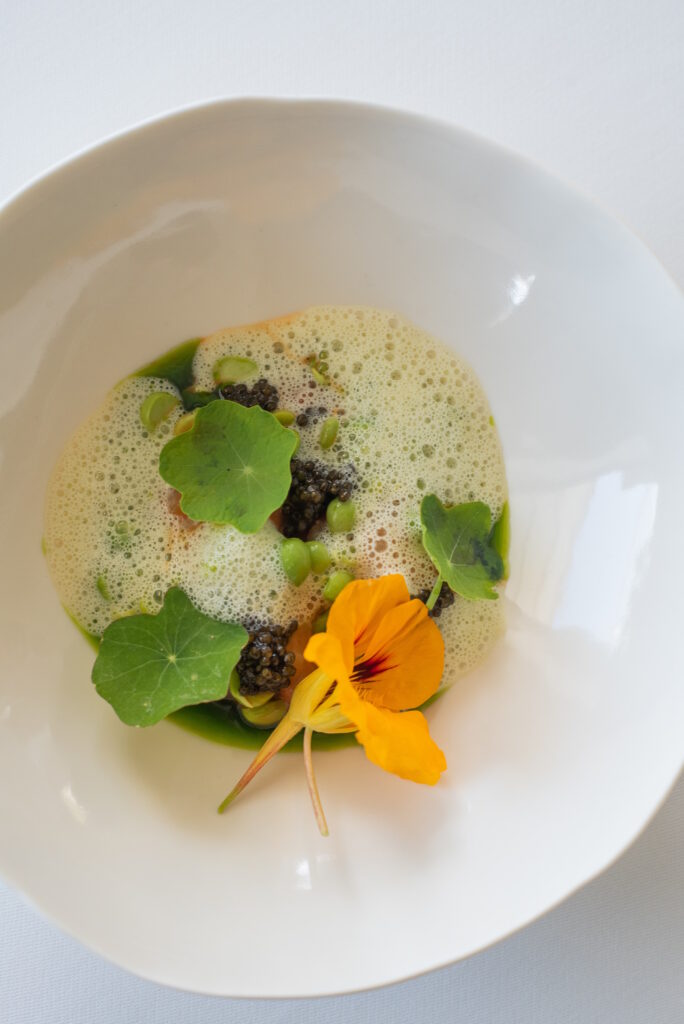
Preparation:
To make the pea pod beurre blanc, sweat the shallot in butter, deglaze with white wine. Once the wine has evaporated, add the pea pods and cream. Cook for 5 minutes. Blend, strain, and keep warm.
Season the peas with spring onion oil and salt. Clean the prawns, removing the heads and intestines. Season with salt and spring onion oil.
Plate the seasoned peas and prawns. Froth the beurre blanc with an immersion blender and add two spoonfuls to the dish. Finish with Beluga caviar and, if desired, nasturtium leaves and flowers.
Pairing: Prosecco DOC Rosé Brut
To complement this refined dish, a Prosecco DOC Rosé is the perfect match. Its fine bubbles, light structure, and delicate fruitiness harmonize beautifully with the sweetness of the prawn and the richness of the beurre blanc. The caviar, with its long and persistent savoriness, finds in the Prosecco DOC Rosé Brut a companion that enhances its elegance without overpowering it.
A classy pairing that brings to a graceful close this journey through the flavors and excellence of contemporary Italian cuisine.
